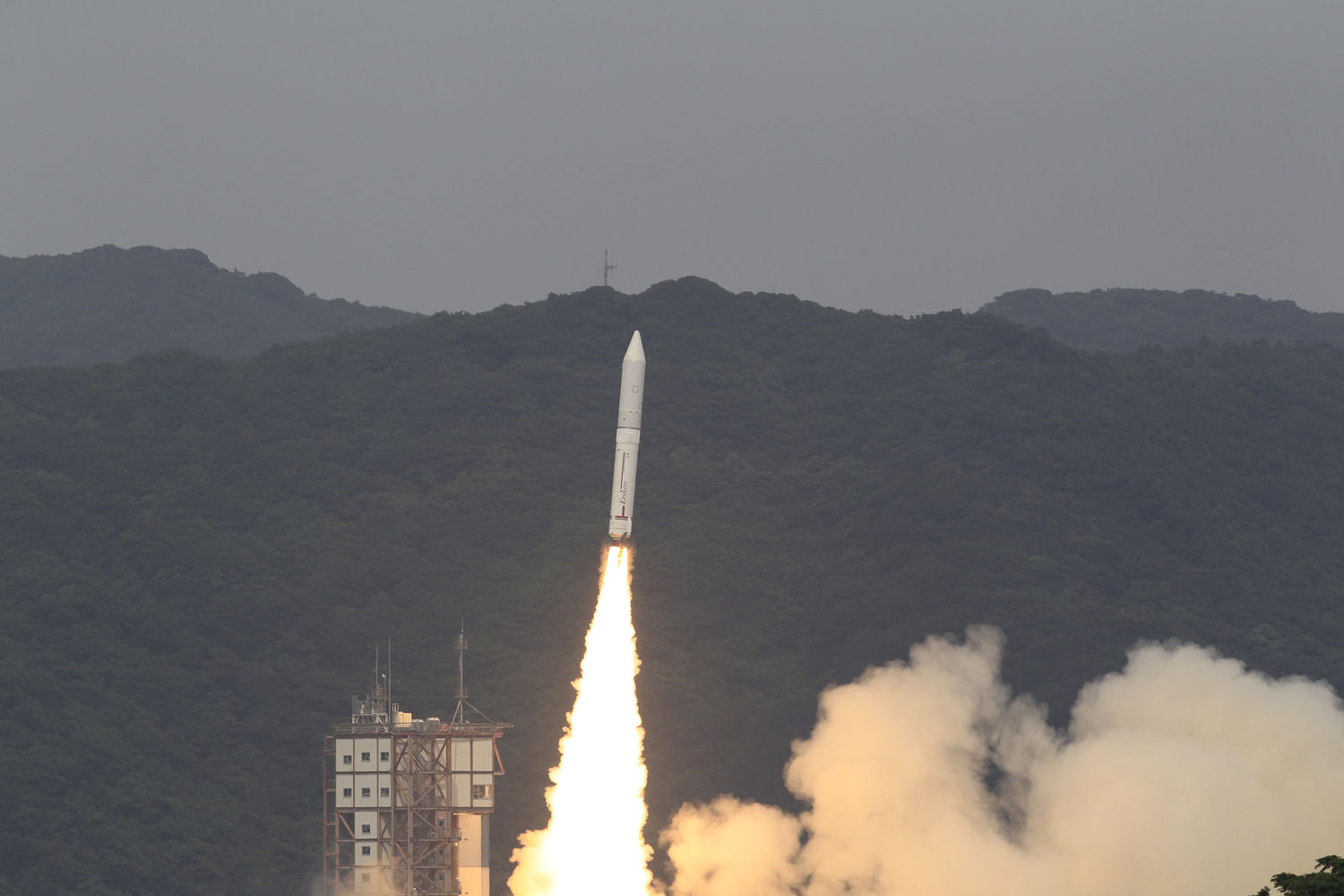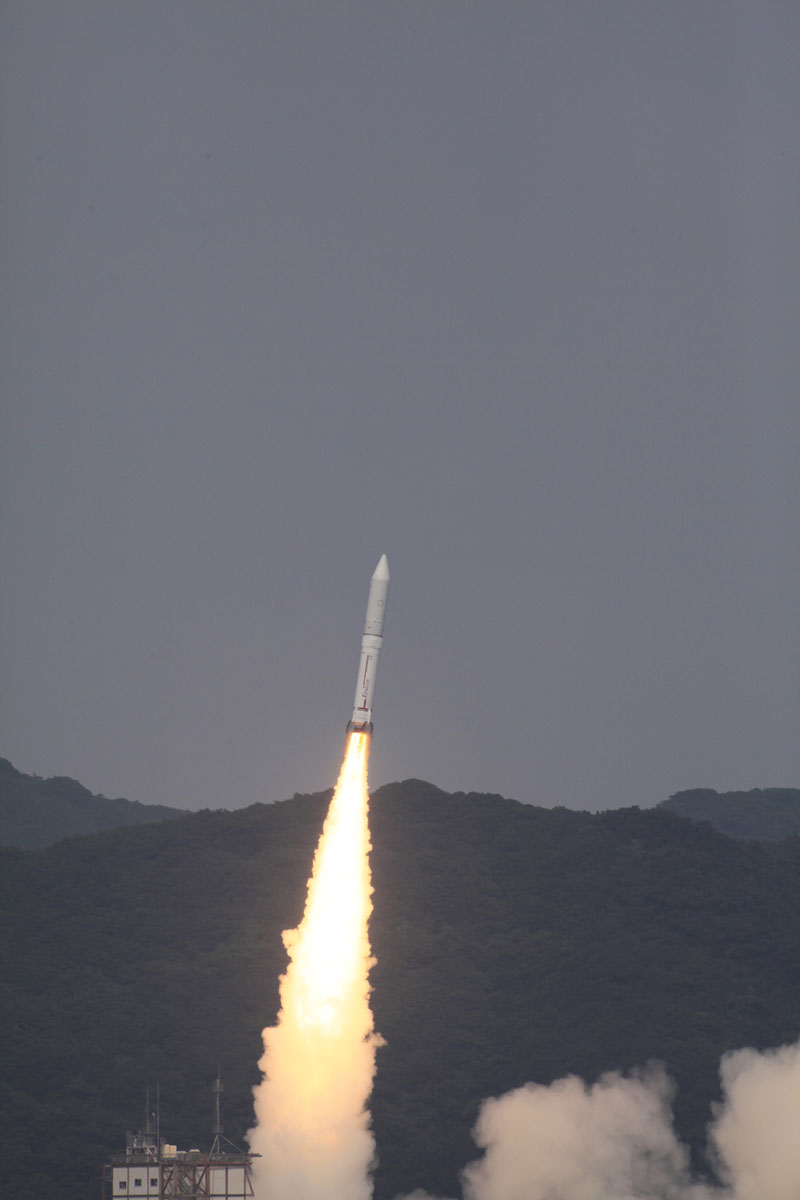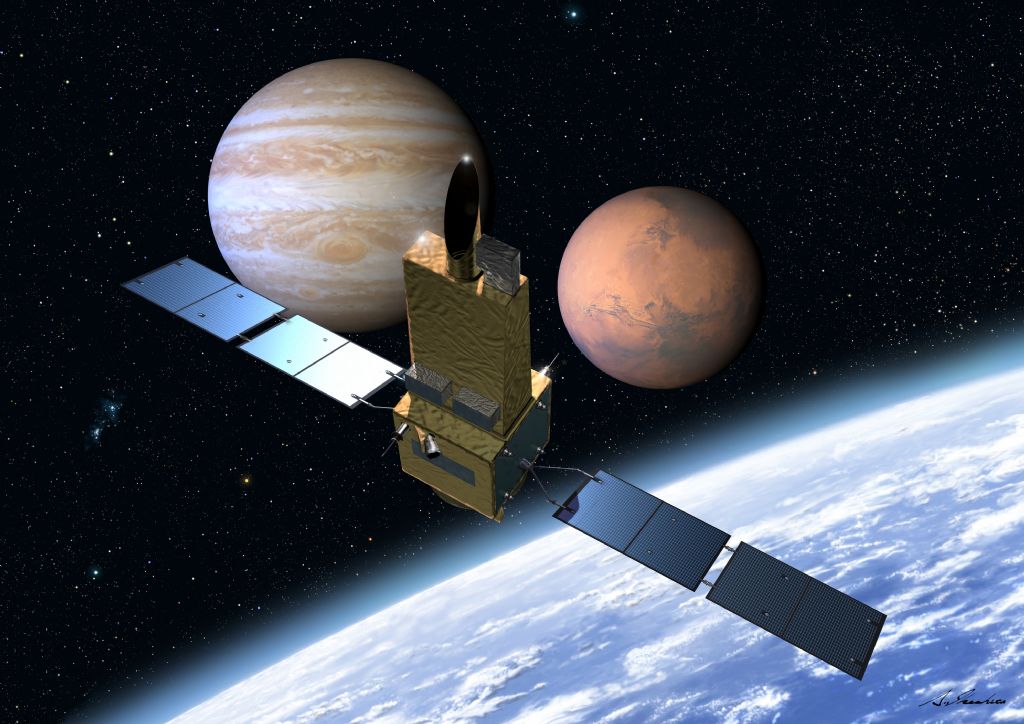Japan's 1st Epsilon Rocket Launches Into Space On Maiden Voyage

Japan's brand-new Epsilon rocket soared into space Saturday (Sept. 14) in a debut launch that carried a novel satellite into orbit to gaze at Venus, Mars and Jupiter.
The three-stage Epsilon rocket launched into orbit at 2 p.m. Japan Standard Time from the Uchinoura Space Center in southern Japan after a three-week delay due to a technical glitch. The rocket is designed to lower the cost of space launches by using automated systems to perform its own health checks instead of relying on human operators.

The Japan Aerospace Exploration Agency initially attempted to launch the Epsilon rocket on Aug. 27, but a computer synchronization issue forced launch controllers to abort the test flight 19 seconds before liftoff. But Saturday, the high-tech rocket performed flawlessly, launching the new SPRINT-A satellite designed to study the magnetic fields and atmospheres of solar system planets. [See photos of Japan's debut Epsilon rocket launch]
"The satellite is currently in good health," JAXA officials said in a statement. The satellite separated from the Epsilon rocket about 61 minutes after liftoff.

The SPRINT-A satellite, short for the Spectroscopic Planet Observatory for Recognition of Interaction of Atmosphere, will observe the atmospheres of Jupiter, Venus and Mars in ultraviolet light. The satellite weighs 771 pounds (350 kilograms) and is expected to spend one year on its primary mission.
Japan's Epsilon rocket is a 91-ton solid-fueled booster that stands 78 feet (24 meters) tall and can launch satellite weighing up to 2,646 pounds (1,200 kilograms) into low-Earth orbit.
The rocket's first stage uses a solid rocket motor based on the boosters used on Japan's liquid-fueled H-IIA launch vehicle, while the second and third stages are based on Japan's M-V rocket, which was retired in 2006. JAXA officials have said they estimated Epsilon's first flight to cost 3.8 billion yen ($38.5 million) – almost half the 7.5 billion yen ($76 million) cost for the M-V rocket.
Get the Space.com Newsletter
Breaking space news, the latest updates on rocket launches, skywatching events and more!
"We would like to express our profound appreciation for the cooperation and support of all related personnel and organizations that helped contribute to the launch of the Epsilon-1," JAXA officials said.
The SPRINT-A satellite was renamed Hisaki after reaching orbit, and its name has a double meaning. First, Hisaki is the name of a cape at the tip of the Tsushiro Peninsula in the Uchinoura area and resembles the satellite's shape, JAXA officials said. The name is also a combination of "saki" (Japanese for "beyond") and "Hi" (the "sun"), because the spacecraft's targets are "beyond the sun," they added.
Editor's Note: This story was updated Sunday, Sept. 15, to correct the metric height of the Epsilon rocket, with is nearly 24 meters tall.
Email Tariq Malik at tmalik@space.com or follow him @tariqjmalikand Google+. Follow us @Spacedotcom, Facebookand Google+. Original article on SPACE.com.
Join our Space Forums to keep talking space on the latest missions, night sky and more! And if you have a news tip, correction or comment, let us know at: community@space.com.

Tariq is the Editor-in-Chief of Space.com and joined the team in 2001, first as an intern and staff writer, and later as an editor. He covers human spaceflight, exploration and space science, as well as skywatching and entertainment. He became Space.com's Managing Editor in 2009 and Editor-in-Chief in 2019. Before joining Space.com, Tariq was a staff reporter for The Los Angeles Times covering education and city beats in La Habra, Fullerton and Huntington Beach. In October 2022, Tariq received the Harry Kolcum Award for excellence in space reporting from the National Space Club Florida Committee. He is also an Eagle Scout (yes, he has the Space Exploration merit badge) and went to Space Camp four times as a kid and a fifth time as an adult. He has journalism degrees from the University of Southern California and New York University. You can find Tariq at Space.com and as the co-host to the This Week In Space podcast with space historian Rod Pyle on the TWiT network. To see his latest project, you can follow Tariq on Twitter @tariqjmalik.









